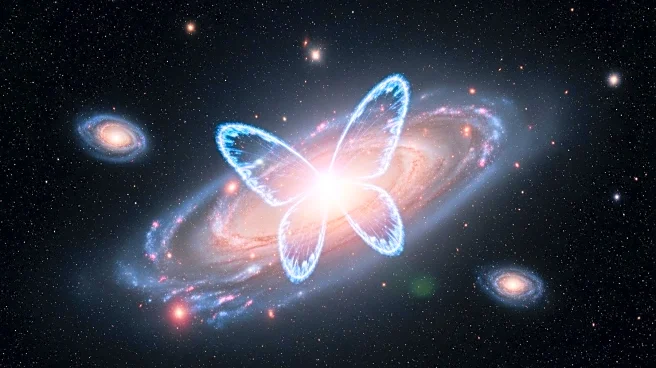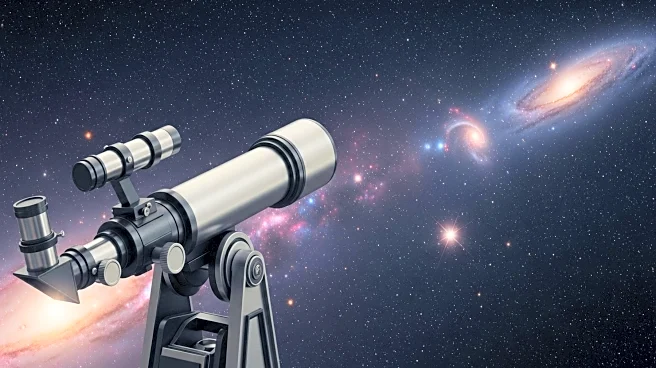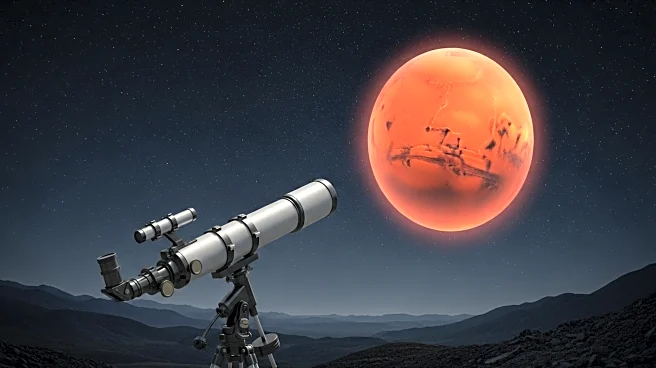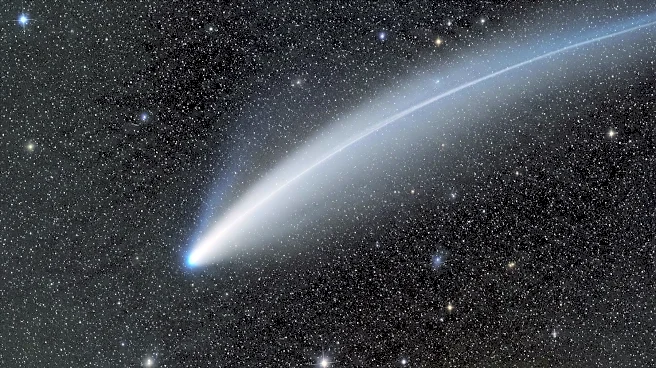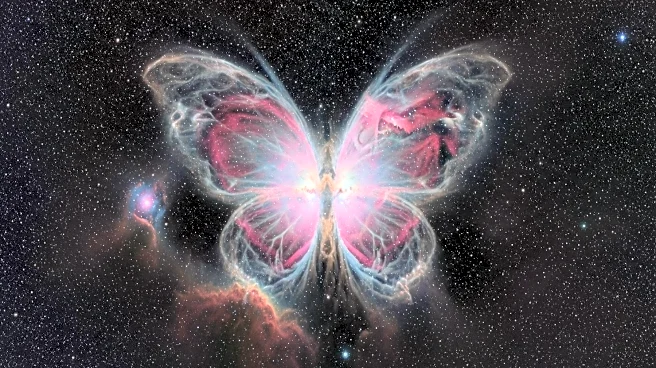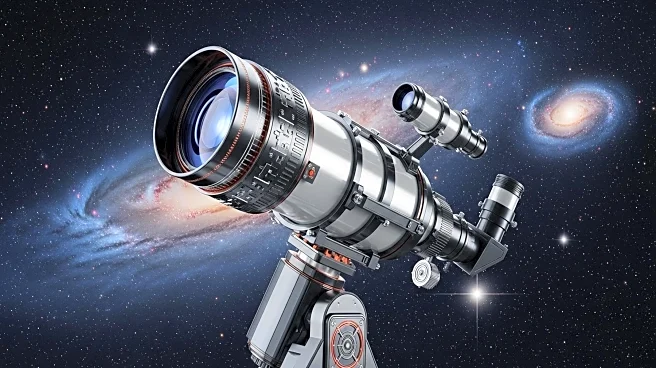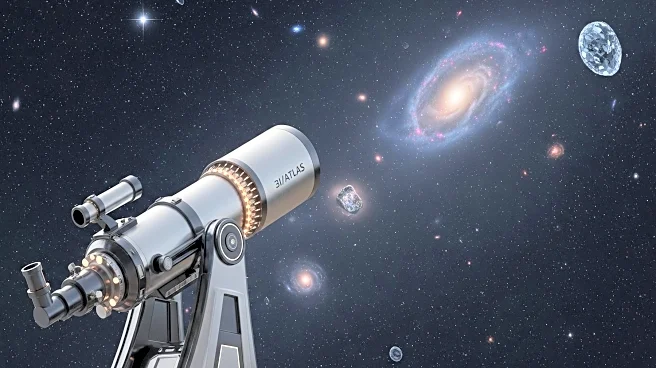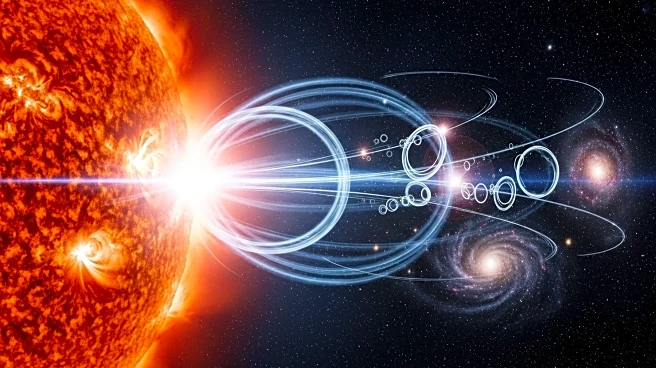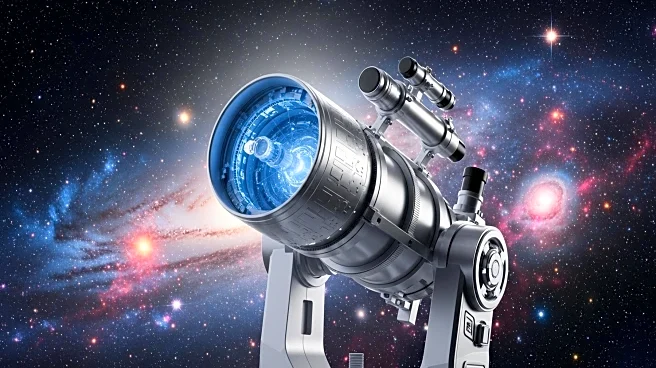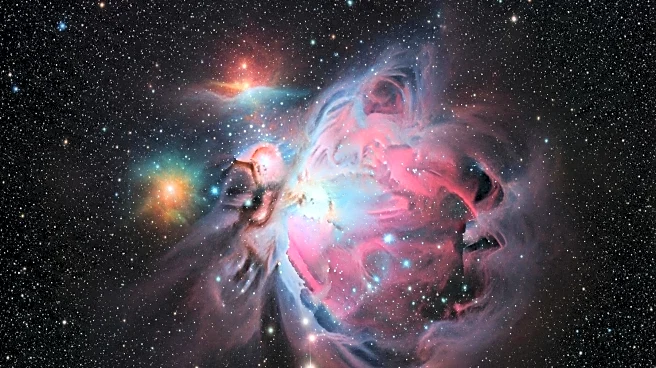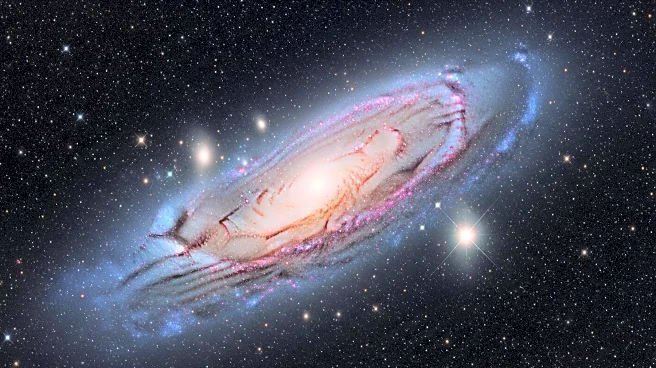What is the story about?
What's Happening?
NASA has released new images of a celestial formation known as the 'Butterfly Star,' captured by the James Webb Space Telescope. This protostar, officially named IRAS 04302+224, is located 525 light years away and is surrounded by a pair of reflection nebulae, giving it a butterfly-like appearance. The James Webb Telescope, the largest in space, utilized its infrared capabilities to capture these images, while the Hubble Space Telescope contributed with its visible spectrum imaging. The combination of data from both telescopes allowed NASA to create a detailed image of this distant star-forming region.
Why It's Important?
The imaging of the Butterfly Star by the James Webb Telescope represents a significant advancement in astronomical observation, showcasing the capabilities of modern space telescopes to capture detailed images of distant celestial phenomena. This development is crucial for the scientific community as it provides insights into star formation and the early stages of planetary system development. The ability to observe such distant objects enhances our understanding of the universe's evolution and the processes that lead to the formation of stars and planets. This could potentially lead to new discoveries about the origins of our own solar system and the conditions necessary for life.
What's Next?
As the James Webb Telescope continues its mission, it is expected to capture more images of distant celestial bodies, further expanding our knowledge of the universe. The data collected will be analyzed by scientists to study the formation and evolution of stars and planetary systems. Future observations may focus on other protostars and nebulae, providing a broader understanding of the cosmos. The ongoing collaboration between the James Webb and Hubble telescopes will likely yield more comprehensive images and data, contributing to the field of astrophysics and potentially leading to groundbreaking discoveries.
Beyond the Headlines
The imaging of the Butterfly Star also highlights the importance of international collaboration in space exploration. The James Webb Telescope is a joint project of NASA, the European Space Agency, and the Canadian Space Agency, demonstrating the global effort required to achieve such scientific milestones. This collaboration not only advances our understanding of space but also fosters international cooperation in scientific research and technology development.
AI Generated Content
Do you find this article useful?
